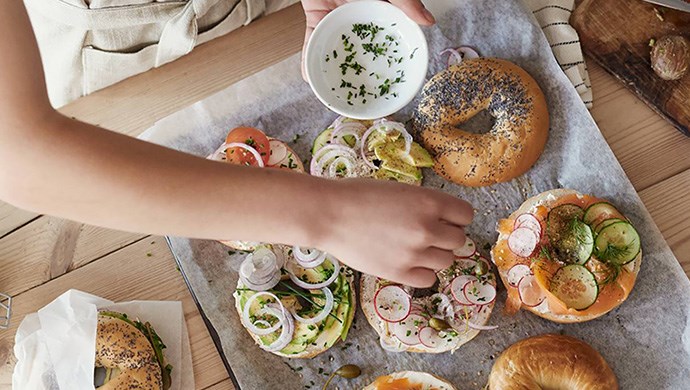White baking paper is hygienic and environmentally friendly choice

You have most likely seen and even used both white and brown baking papers. But have you ever wondered what is the difference between these two? Is it just the color or are there actual differences? Is one of them more environmentally friendly than the other?
Both white and brown baking papers are made from fresh wood fibres and they do not contain residues of printing ink or chemicals found for example in recycled paper. One component of wood is lignin, which makes the tree stem stiff and enables the tree to stand. Lignin is naturally brown and in order to produce white paper, the wood fibres must be bleached to remove the lignin. Nowadays the bleaching process is very advanced and safe and there are no harmful chemicals used. Metsä’s greaseproof papers are bleached using modern, elemental chlorine free ECF technology, which guarantees that the highest hygiene demands are met.
The difference between white and brown baking paper is that there are more wood-originating compounds left in brown baking paper. Therefore in brown paper there might be more overall migration of components. In practice this may cause a slight taste or odor transferring to food. This is harmless, but sometimes unpleasant and not acceptable in all end uses. For example wrapping chocolate or tea in brown baking paper for a long time is not recommended.
White baking paper is preferred in professional use
Professional kitchens and industrial food productions lines have high level hygiene demands. Therefore detecting possible pollutions and deviations from standards is extremely important. White baking paper is preferred in professional use as it shows possible contaminations faster and more clearly. Also deviations from standards can be spotted faster because of the clear contrast between baking goods and white paper.
Environmental impact of white and brown baking paper is quite equal
While brown baking paper may seem to be more environmentally friendly choice, the environmental impact of white and brown baking paper is quite equal. In the paper manufacturing part of the production process, the impact of white baking paper is actually smaller.
Producing brown paper requires more energy. This is because there are more wood-originating compounds left and therefore higher refining resistance and lower production speed. The energy consumption is even 20 kWh higher per ton than for bleached paper. To ensure that the baking papers are safe to use in food contact, the raw materials are carefully selected, finished products tested and the entire production process carefully monitored and certified by third parties.
Read more about Saga cooking and baking papers here
For further information:
Katrin Bunner, Vice President Sales, Marketing & Offering
Tel: +49 171 1263321
Katrin.bunner@metsagroup.com
Metsä Tissue
www.metsatissue.com
Metsä Tissue creates a cleaner everyday life. We are one of the leading tissue paper suppliers in Europe to households and professionals and one of the leading greaseproof paper suppliers globally.
Our brands are Lambi, Serla, Mola, Tento, Katrin and SAGA. With production units in five countries, we employ around 2,500 people. In 2020, our sales totalled EUR 1 billion. Metsä Tissue is part of Metsä Group.




